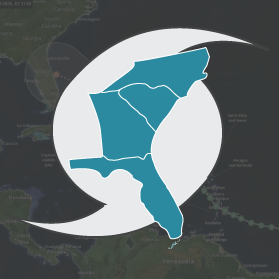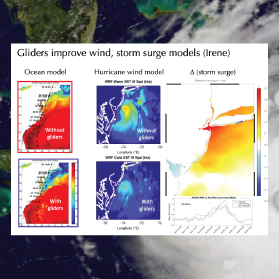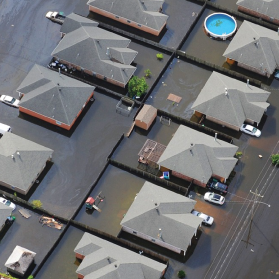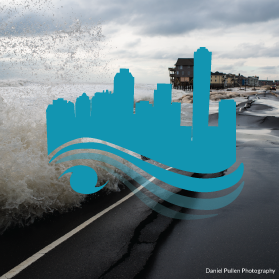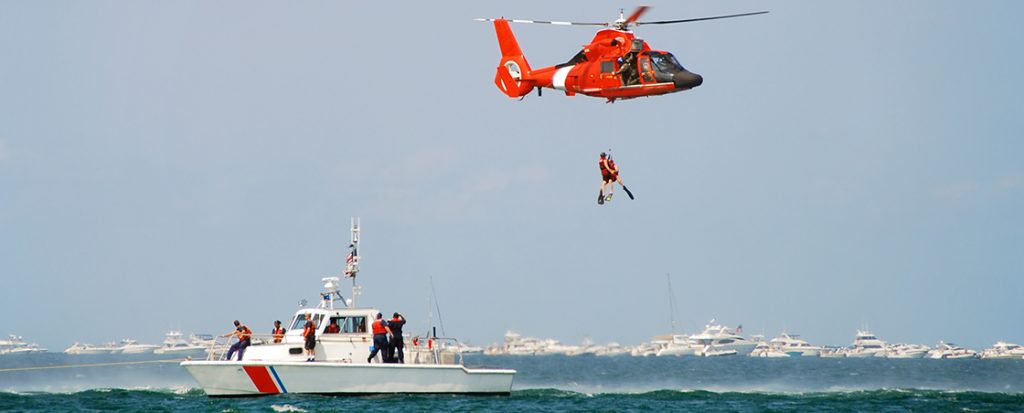
The southeast experiences severe weather and climate related events that can cause significant hardships for the economic, environmental, and social well-being of residents and visitors.
SECOORA focuses on researching climate variability and improving coastal hazard resilience by:
- Operating buoys and coastal stations to provide data to improve the accuracy of hurricane and marine weather forecasts
- Coordinating glider missions before and during hurricane events which provide subsurface ocean data for weather models
- Funding models that provide marine circulation for the eastern Gulf of Mexico and North Atlantic
- Engaging in the Southeast & Caribbean Disaster Resilience Partnership (SCDRP) which strengthens the ability of the region’s coastal communities, economies, and environment to recover from coastal storms
Below are examples of SECOORA supported efforts related to Coastal Hazards and Climate Variability by:
Eyes on the Storm: Hurricane Data Portal
Eyes on the Storm is an interactive portal that connects you to live and past hurricane and tropical storm data. The tool pulls data from within 50 miles of a hurricane’s path and showcases the highest wind speeds and wave heights and lowest barometric pressure. Click here to follow a hurricane!
Hurricane Gliders: Improving Tropical Storm Intensity Forecasts
Learn how researchers are deploying gliders in the Southeast during hurricane season are providing valuable data for hurricane intensity modeling. Watch the webinar.
Sea Level Rise Curriculum for Middle School Students
Educators from Georgia Institute of Technology created a curriculum for middle school students using the 5E Model of Instruction to actively investigate climate change and the phenomenon of sea level rise. Use the curriculum to increase student interaction with datasets and build awareness of climate-change related trends. Learn more.
Affiliate Program: Southeast & Caribbean Disaster Resilience Partnership (SCDRP)
The SCDRP seeks to strengthen community resilience and support rapid recovery from storms and disasters by serving as the primary network for professionals in emergency management, climate adaptation, and disaster recovery. Learn more.
